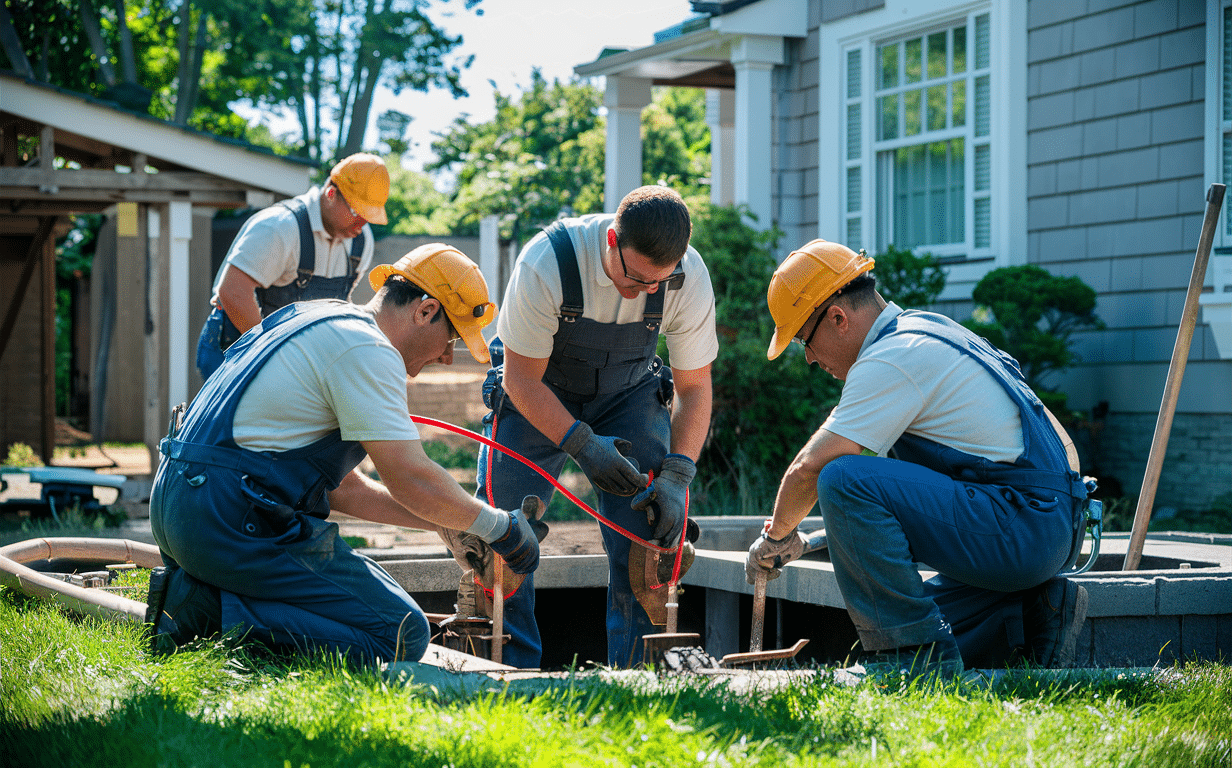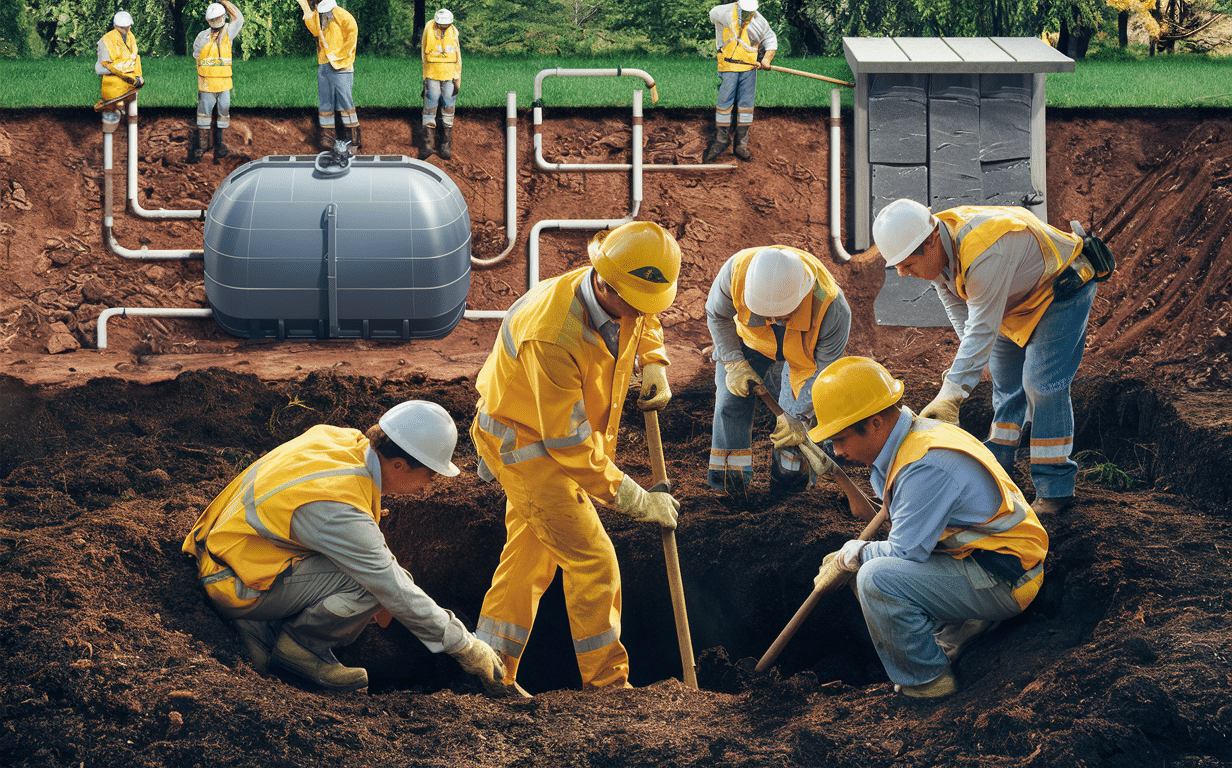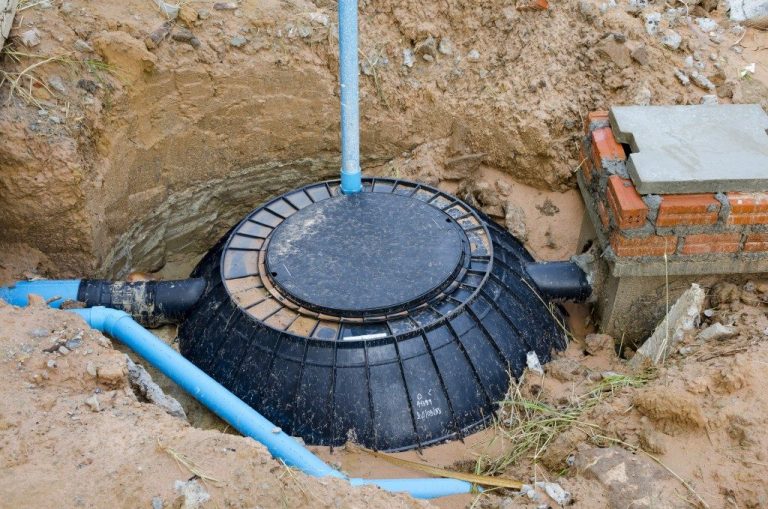How to Install a Septic Tank System: Always Trust the Experts
Wondering how to install a septic tank system on your own? We bet you wanna try but leave this process to the experts and let us save you from all the hassle and headaches!
Septic system installation is the process of installing an underground wastewater treatment system for homes or businesses not connected to a municipal sewer system. Are you considering installing a septic tank on your property?
While it may seem doable on your own, trusting professionals is crucial. This guide explains why expert installation is best for your septic system needs. Proper installation ensures safety, efficiency, and longevity for wastewater management.
Attempting a DIY septic system risks costly mistakes, health hazards, and violating local regulations. By hiring experienced pros, you’ll have peace of mind knowing your system meets codes and functions optimally for years to come.
Understanding How To Install A Septic Tank System
When it comes to managing wastewater from your home, a septic tank system is a reliable solution. This underground system treats and disposes of household wastewater in a safe and environmentally-friendly manner.
Although some may want to learn and DIY the process of how to install a septic tank system on their own, it’s crucial to consider the following factors;
Main Components of a Septic System
A typical septic system consists of three main components:
-
The septic tank: This is a buried, water-tight container where wastewater from your home flows into. Here, solid waste settles at the bottom, while the liquid portion flows into the drain field.
-
The drain field: Also known as a leach field, this is a shallow, underground area where the liquid waste from the septic tank is distributed and absorbed into the soil.
-
The distribution box: This component helps evenly distribute the liquid waste from the septic tank into the drain field.

Types of Septic Systems
There are several types of septic systems available, each designed to cater to specific soil conditions and property requirements:
-
Conventional Septic Systems: These are the most common and cost-effective systems, suitable for properties with appropriate soil conditions and enough land area for a drain field.
-
Aerobic Treatment Systems: These systems use aerobic bacteria to break down waste more efficiently, making them suitable for properties with limited land area or poor soil conditions.
-
Mound Systems: These are raised systems designed for properties with shallow soil depths, high water tables, or poor soil conditions.
When it comes to learning how to install a septic tank system, it’s crucial to contact professional septic installers in your area. These experts can assess your property’s specific needs and recommend the most suitable septic system for your home.
Remember, proper installation and maintenance are key to ensuring your septic system functions efficiently and effectively for years to come.
Factors to Consider On How Properly Install A Septic Tank System
Installing a septic tank system on your property is a significant undertaking that requires careful planning and consideration of various factors. Before proceeding with the installation, it’s crucial to assess the soil type, percolation rate, and groundwater depth of your land.
These elements play a vital role in determining the feasibility and design of the septic system.
Soil Type and Percolation Rate
The soil type on your property significantly impacts the efficiency of the drain field. Soils that are too dense or have a high clay content may not allow for proper drainage, leading to system failure.
To evaluate the suitability of your soil, a percolation test is typically conducted. This test measures the rate at which water drains through the soil, providing valuable insights into the design and size of the drain field.
Groundwater Depth
Another critical factor to consider is the groundwater depth. If the groundwater level is too high, it can interfere with the proper functioning of the septic system.
Ideally, there should be sufficient distance between the drain field and the groundwater table to prevent contamination and ensure proper treatment of the wastewater.
Local Regulations and Permits
Before installing a septic tank system, it’s essential to familiarize yourself with the local regulations and obtain the necessary permits. Each county or municipality has specific requirements and guidelines on how to install a septic tank system.
Failure to comply with these regulations can result in fines or the need for costly remediation.
Sizing the Septic Tank and Drain Field
Proper sizing of the septic tank and drain field is crucial for the efficient operation of the system. The size of these components is determined by the expected wastewater volume generated by your household.
Underestimating this volume can lead to premature system failure, while oversizing can result in unnecessary expenses.
To ensure a smooth and successful septic tank installation, it’s highly recommended to consult with experienced professionals. Septic system installers and plumbers have the expertise to assess your property’s unique conditions, recommend the appropriate system design, and guide you through the entire installation process.
By partnering with experts, you can have peace of mind knowing that your septic system will function efficiently and comply with all necessary regulations.
The Septic Tank Installation Process
Preparing the Site
The first step in the septic tank installation process is preparing the site. This involves carefully assessing the soil conditions and determining the best location for the septic system.
Professional installers use specialized equipment to excavate the area and ensure proper drainage for the drain field.
Installing the Septic Tank
Once the site is prepared, the septic tank itself can be installed. This is a crucial step that requires expertise and adherence to local building codes. The tank is carefully lowered into the excavated area and connected to the plumbing of the home.
Proper installation ensures that the wastewater from your home flows into the tank and is treated before being dispersed into the drain field.
Connecting the Drain Field
After the septic tank is in place, the drain field is constructed. This involves laying a network of pipes and gravel, allowing the treated wastewater to be absorbed into the soil.
Professional installers use specialized techniques to ensure that the drain field is sized correctly and functions efficiently.
Final Inspection and Maintenance
Once the septic system is fully installed, a final inspection is typically required to ensure that everything has been done correctly. Regular maintenance, such as pumping the septic tank every few years, is essential to keep the system functioning properly and prevent costly repairs or environmental issues.
Throughout the entire installation process, it is crucial to work with experienced and licensed professionals. They have the knowledge and expertise to ensure that your septic system is installed correctly, adhering to all regulations and building codes.
Attempting to the process and learning how to install a septic tank system on your own can lead to costly mistakes and potential health hazards—especially if you didn’t undergo any professional training and certifications.
Drain Field Installation
The drain field is the unsung hero of the septic system, responsible for the final treatment and dispersal of wastewater. It’s a critical component that ensures your home remains free from the unpleasant consequences of improper waste management.
Types of Drain Fields
There are several types of drain fields, each designed to suit different soil conditions and installation requirements. Trenches, beds, and mounds are the most common options.
-
Trenches are narrow, excavated channels filled with gravel and perforated pipes. They’re ideal for well-draining soils and are the most common choice for residential septic systems.
-
Beds are wider, shallower versions of trenches, suitable for areas with limited space or shallow soil depths.
-
Mounds are raised drain fields constructed above the natural soil level, often used when the soil is too dense or the water table is too high for traditional drain fields.
Installation Process
Installing a drain field is a meticulous process that requires careful planning and execution. First, the soil is thoroughly evaluated to determine the most suitable type of drain field and its size.
Then, the area is excavated, and perforated pipes are laid in a specific pattern, surrounded by gravel layers that facilitate the distribution and treatment of wastewater.
A distribution box plays a crucial role in evenly distributing the wastewater to all drain field lines. Proper leveling of this box is essential to ensure equal flow and prevent any one area from becoming oversaturated.
The type of pipes used in the drain field is also important. Rigid plastic pipes with perforations are commonly used, as they allow the wastewater to seep out gradually while preventing soil from entering the pipes.
While the installation process may seem straightforward, it’s crucial to contact professionals for expert guidance. Septic system installers have the knowledge and experience to ensure your drain field is installed correctly, maximizing its efficiency and longevity.
Post-Installation Considerations
Once the septic tank system is installed, it’s crucial to follow certain guidelines to ensure its proper functioning and longevity.
Regular septic tank pumping and maintenance are essential to prevent system failure and extend its lifespan. Neglecting this vital task can lead to costly repairs or even the need for a complete system replacement.
Water Conservation Measures
Overloading your septic system can cause significant problems. To avoid this, it’s essential to practice water conservation measures.
Simple steps like fixing leaky faucets, taking shorter showers, and spreading out water-intensive activities like laundry and dishwashing can go a long way in preventing an overloaded septic tank.
Avoiding Harmful Substances
It’s crucial to avoid disposing of harmful substances, such as chemicals, paint thinners, and non-biodegradable materials, into your septic system. These substances can disrupt the natural bacterial process that breaks down waste in the tank, leading to costly repairs or environmental damage.
Instead, properly dispose of these materials through designated hazardous waste facilities.
By following these simple yet crucial post-installation considerations, you can ensure that your septic tank system operates efficiently and effectively for years to come, saving you from the hassle and expense of premature repairs or replacements.
Choosing the Right Septic System Installation Experts

Selecting the right professionals for your septic system installation is crucial to ensure a successful and long-lasting solution. A septic tank system is a significant investment for your home, and it’s essential to work with licensed and experienced installers to avoid costly mistakes or future problems.
Evaluate Potential Installers
When researching potential septic system installers, it’s crucial to ask the right questions. Inquire about their experience, licensing, insurance coverage, and warranty policies. Request references from previous clients and read online reviews to gauge their reputation.
A reputable company should be transparent and provide detailed written estimates and contracts before proceeding with the installation.
Comprehensive Services
Consider working with a company that offers comprehensive services, including system design, installation, and ongoing maintenance. These experts can assess your property’s soil conditions, size requirements, and local regulations to recommend the most suitable septic system for your needs.
They can also guide you through the installation process, ensuring compliance with local codes and proper drainage.
Investing time in researching and selecting the right septic system installation experts can save you money, hassle, and potential health risks in the long run. Don’t compromise on quality when it comes to this essential component of your home’s wastewater management.
Consider Hiring Professionals
While some homeowners may be tempted to install a septic tank system themselves to save money, it’s generally advisable to hire professionals. Proper installation requires specialized knowledge, equipment, and adherence to local regulations.
A poorly installed system can lead to costly repairs, environmental contamination, and potential health hazards.
By choosing licensed and experienced septic system installers, you can have peace of mind knowing that your wastewater will be safely and efficiently managed, protecting your property and the environment.
Your Reliable Partner for Safe and Efficient Septic System Installation
As homeowners in Orange County, Rockland County, and Sullivan County, ensuring a properly functioning septic system is crucial for maintaining a healthy living environment. At United Sewer & Septic, our team of experienced professionals understands the complexities involved in septic system installation.
We’re here to guide you through the process, from site evaluation to final inspection, ensuring compliance with local regulations and delivering a long-lasting solution. Request your estimate now by filling out our online form or giving us a call, and let us handle your septic system needs with the expertise you deserve.







